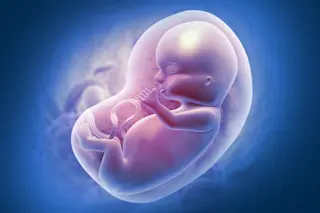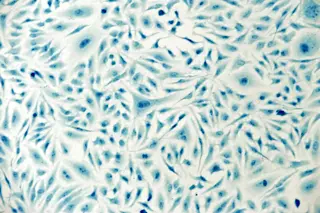After the post on Jewish genetics from a few days ago I was going to do a follow up clarifying a few issues. It was a big paper and I skipped over material which I thought might have benefited from further elaboration, but would have taken up too much time. But Dienekes alerts me to another paper which just came out in Nature of interest, The genome-wide structure of the Jewish people:
Contemporary Jews comprise an aggregate of ethno-religious communities whose worldwide members identify with each other through various shared religious, historical and cultural traditions...Historical evidence suggests common origins in the Middle East, followed by migrations leading to the establishment of communities of Jews in Europe, Africa and Asia, in what is termed the Jewish Diaspora...This complex demographic history imposes special challenges in attempting to address the genetic structure of the Jewish people...Although many genetic studies have shed light on Jewish origins and on diseases prevalent among Jewish communities, including studies focusing on uniparentally and biparentally inherited markers...genome-wide patterns of variation across the vast geographic span of Jewish Diaspora communities and their respective neighbours have yet to be addressed. Here we use high-density bead arrays to genotype individuals from 14 Jewish Diaspora communities and compare these patterns of genome-wide diversity with those from 69 Old World non-Jewish populations, of which 25 have not previously been reported. These samples were carefully chosen to provide comprehensive comparisons between Jewish and non-Jewish populations in the Diaspora, as well as with non-Jewish populations from the Middle East and north Africa. Principal component and structure-like analyses identify previously unrecognized genetic substructure within the Middle East. Most Jewish samples form a remarkably tight subcluster that overlies Druze and Cypriot samples but not samples from other Levantine populations or paired Diaspora host populations. In contrast, Ethiopian Jews (Beta Israel) and Indian Jews (Bene Israel and Cochini) cluster with neighbouring autochthonous populations in Ethiopia and western India, respectively, despite a clear paternal link between the Bene Israel and the Levant. These results cast light on the variegated genetic architecture of the Middle East, and trace the origins of most Jewish Diaspora communities to the Levant.
I doubt it's a coincidence that this paper came out right on the heels of the previous one; papers are presented at conferences and word gets around, and I assume that the two groups were rushing to get their work published soon enough so as not to be totally overshadowed by the first past the post. The text of both papers is also an interesting window into the role of interpretation in science, as this one seems to emphasize the common Middle Eastern ancestry of Jews (excluding outliers such as the Ethiopian Jews), while the previous one highlighted structure within the Jewish community. Despite the similarities, this second paper is worth exploring for one major reason: it includes two populations of Jews, Moroccans and Yemenis, which were not in the previous research. The methodology of both groups was similar. Take Jewish and non-Jewish populations of interest, and sequence them with a SNP-chip, and then try and extract out some useful patterns for the purposes of analytics. Here's an important issue I want to reemphasize: the different methods of extracting out useful patterns give somewhat different results, and these results themselves are to a great extent human constructions which map only approximately onto the shape of reality. Measures of "genetic distance" are really just useful reifications and their biological reality as the differences amongst billions of base pairs is a somewhat different thing. This is why it is difficult to be more than trivial sometimes when it comes to what the "bottom line" on these studies are; the bottom lines represent human attempts to generate intuitive categories and representations on natural processes which are in some ways deeply alien to us. So with the cautions out of the way, let's look at what the figures in this paper might indicate to our puny human intuitions. First, here is a slice of a PCA where various Jewish groups have been mixed with a range of populations from the HGDP data set as well as a few extra ones. Specifically, I've focused on panel B which expands the region of the plot which contains populations of European and West Asian origin. Additionally, I've added a few extra labels and expanded the legend for clarity of viewing.
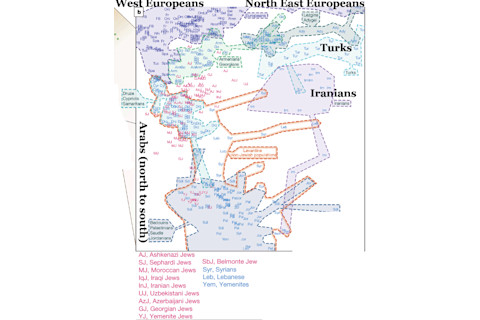
The second figure constrains the variation to European and West Eurasian populations for the purposes of extracting out the two largest dimensions of variation. Observe that the general configurations of the relationships remains the same (if rotated a bit), but the magnitudes are now shifted. In the first plot the unadmixed African populations were the most diverse group, while in the second the Arab groups with appreciable African ancestry such as the Bedouin are. So eigenvector 1 seems to roughly rank order West Asian groups by their African ancestry, while the second eigenvector is a rough east-west axis within the various regional groups.
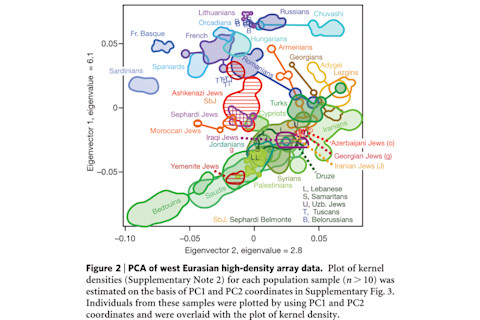
The PCA aligns well with the previous paper. Ashkenazi Jews are roughly between European and Middle Eastern populations, as one would expect if they were in some sense an admixture between the groups. In the first paper the "Italian" group was from northern Italy. In this paper it is from Tuscany (Tus/T respectively for figure 1 and 2). The more interesting aspect are the non-Ashkenazi groups. This paper seems to confirm the east-west division evident in the earlier paper, whereby Ashkenazi & Sephardic groups form a natural cluster, as do the Mizrahi Jews of Iraq and Iran. Additionally, the Jews of Morocco seem to fall close to the Ashkenazi-Sephardic cluster (Moroccan Jews are Sephardic, but separated out a bit for the purposes of this paper). In the HGDP sample the closest thing to a "host" population for the Moroccan Jews are the Mozabites of Algeria, who are a Saharan Berber group. Unfortunately I don't think this is the best proxy for the Berber groups because the Mozabites have a substantial proportion of Sub-Saharan African ancestry, more than is typical from what I can gather for populations from the Maghreb. But they added in their own group of Moroccans as well, though I didn't track down the notation in the supplementary table 1 to ascertain the provenance of this sample. The Yemeni Jews on the other hand are easier to understand. They seem to shake out as just another Middle Eastern population. They're a subset of the Saudis in both plots. Since they're regionally constrained to the southwest of the Arabian peninsula this makes sense, as the Saudi sample seems more regionally diverse in its recent ancestry (the next figure makes this clear to me). So the Yemeni Jews are roughly a third major cluster of "mainline" Jewish groups. Though their history is not as antique as that of the Jews of Iraq and Iran, who presumably go back to the period of the Persian Empire of the Achaemenids (earlier in the case of the Babylonian Jewry naturally), it does pre-date Islam. Additionally the genetic data suggest that this Jewish community has been relatively endogamous since the rise of Islam, as the next plot highlights. It uses the ADMIXTURE method, with eight ancestral populations represented by each particular color. I've truncated the plot to populations of interest, in particular the Middle Eastern ones.
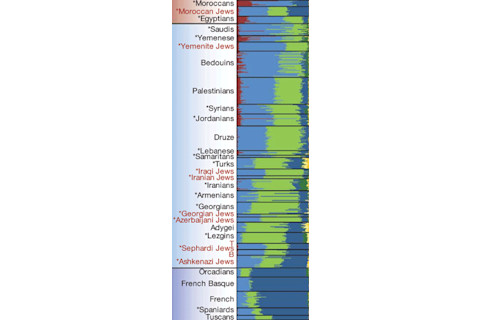
The inference that Middle Eastern Jews have been relatively endogamous since the rise of Islam is supported by this figure, the red-brown segment is pretty close to Sub-Saharan African ancestry in an individual's genome. The Arab and North African Muslim groups tend to have some appreciable Sub-Saharan African ancestry, but the Jewish groups do not. This is probably due to the fact that the arrival of Sub-Saharan Africans as slaves was more a feature of the Islamic era states, which had far more pervasive trade links with Africa south of the Sahara than any of the societies of antiquity. The Jews within the lands of Islam who did not convert were marginalized and did not participate fully in the commercial and cultural life of these societies. It seems plausible to assume then that there were few avenues for persons of slave ancestry and origin to enter into the Jewish community, as was common within Muslim society, where the offspring of slave women were recognized as free if the father was free. The Druze, a post-Muslim sect traditionally restricted to the mountains of Lebanon exhibit the same lack of Sub-Saharan African ancestry as Middle Eastern Jews, and this presumably is a pointer to their marginalization over the past one thousand years from the world of Arab Islam generally. From this figure it looks as if the Moroccan Jews are fundamentally distinctive in some way from the non-Jewish population of Morocco. The green segment within the plot seems lacking in groups from the far western edge of the World Island of Africa-Eurasia. The full figure shows it is also lacking from populations on the eastern edge, as well as Sub-Saharan Africa, excluding those which have admixture. This component then point to origins within the center of the World Island, focused on the Mashriq and regions somewhat to the east. The magnitude of contribution of this segment to Moroccan Jews to me clinches the earlier observation of a close association between Ashkenazi, Sephardic and Moroccan Sephardic Jews, and a tie back to the Middle East in part for all these groups (though some of this may be of deeper origin, as the contrast between French and French Basques shows that different groups within the same nation can have different contributions, and the Moroccan non-Jewish samples may not be representative). Finally, let's look at the table which attempts to summarize genetic distances using allele sharing. The lower values indicate more genetic closeness.
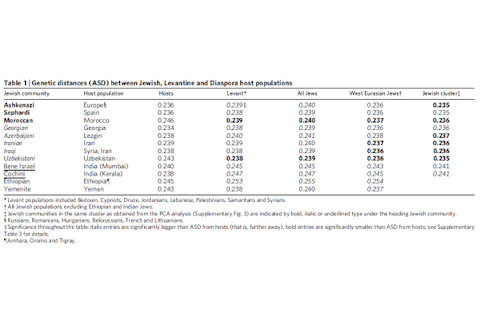
Throwing all the variation together in a grab bag doesn't seem to really inform that much from what I can tell. Here are the authors:
Genetic relationships between our population samples were then explored with the measure of allele sharing distances (ASDs)...Table 1 provides genetic distances between each Jewish community and its corresponding host population, all Jewish communities, west Eurasian Jewish communities, their respective Jewish group inferred from the PCA, and non-Jewish Levantine populations. The Ashkenazi, Sephardi, Moroccan, Iranian, Iraqi, Azerbaijani and Uzbekistani Jewish communities have the lowest ASD values when compared with their PCA-based inferred Jewish sub-cluster...In all except the Sephardi Jewish community, this ASD difference is statistically significant ... ASD values between Ashkenazi, Sephardi and Caucasus Jewish populations and their respective hosts are lower than those between each Jewish population and non-Jewish populations from the Levant. This might be the result of a bias inherent in our calculations as a result of the genetically more diverse non-Jewish populations of the Levant. The Ethiopian and Indian Jewish communities show the lowest ASD values when compared with their host population....
So what's the bottom line here? I think the bottom line is that there isn't a bottom line, and that we need to proceed on a case by case basis. I've focused on Middle Eastern Jews in this post, but let's put the spotlight on the Indian Jews, the Bene Israel of Bombay, who were separated from the Jewish Diaspora, and the Cochin Jews, who were more well integrated (the Bene Israel did not have the Talmud, the Cochin Jews did). Both these groups resemble their Indian host populations genetically. Yet, Y chromosomal markers strongly imply that the Bene Israel are descended from male Middle Eastern Jews (many carry the Cohen Modal Haplotype). What likely occurred in India was that generations of admixture between Jews and non-Jews resulted in the elision of differences between the two groups, despite the persistence of a cultural distinction. Why the difference with other Jewish groups? I suspect that it has to do with the relative lack of a special relationship between Jews and the host culture in India as opposed to the world of Islam or Christendom. In India Jews were just another group, not subject to particular exclusion or marginalization. Non-Jews could, and did, move into the Indian Jewish community, while this was taboo in the Islamic or Christian world. A similar process seems to have occurred to the Jews of Kaifeng, who intermarried and eventually lost their identity because of their greater eventual isolation from the Jewish Diaspora in comparison to the Indian Jews, especially those of Cochin. The last generations of the Jews of Kaifeng, who likely descended from Middle Eastern traders, witnessed the sons of this community enter into the Chinese bureaucracy through cultivation of that culture's classics, as well as the farce of Han wives of Jewish notables tending to pigs in their yards. Citation:
Behar, D., Yunusbayev, B., Metspalu, M., Metspalu, E., Rosset, S., Parik, J., Rootsi, S., Chaubey, G., Kutuev, I., Yudkovsky, G., Khusnutdinova, E., Balanovsky, O., Semino, O., Pereira, L., Comas, D., Gurwitz, D., Bonne-Tamir, B., Parfitt, T., Hammer, M., Skorecki, K., & Villems, R. (2010). The genome-wide structure of the Jewish people Nature DOI: 10.1038/nature09103









